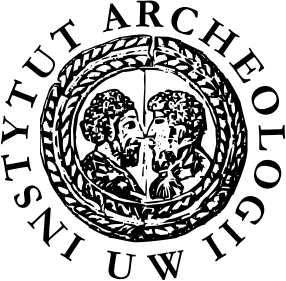The emergence of monks and monastic communities in the eastern part of the Roman Empire in the fourth century marked the beginning of a movement which became one of the most vital and durable components of Christian religiosity. Its subsequent development, expansion and the role it came to play in politics, culture and the shaping of Christian doctrine determine the importance of its study for opening new perspectives on Late Antiquity. It is with this thought in mind that we decided to broach a wide range of subjects connected with the history of Eastern monasticism in the first four centuries of its existence. Our focus on the Christian East is a result of the desire to obtain a cohesive picture of the investigated phenomena founded upon a rich and reliable base of complementary sources. The geographical scope of the project includes Asia Minor, Syria, Palestine and Egypt. The presence of Egypt is especially pronounced in our discussions, as this region offers an exceptional source base composed of hundreds of documents and letters preserved on papyri and ostraca which allow us to get as close as we can to the everyday life of communities and individuals.
In our study, we take into consideration almost all texts dealing with monks and monastic communities of the late antique East, written in Greek, Latin, Coptic, Arabic and Syriac. Created in various circles and for various purposes, these texts aimed on the one hand at preserving tradition or edifying new generations of monks and on the other at regulating the legal status of the communities or their internal workings. The collections of apophthegms which stem from the oral tradition of the ‘Desert Fathers’ give us a deep insight into monastic spirituality. The dossiers of the Pachomian and Shenoutean congregations of Egypt show us cenobitism ‘in the making’, with the spiritual and social implications of the community-building process. Models of monastic life that developed under a direct Egyptian influence but subsequently took a different, original course can be glanced through Palestinian sources (letters of Barsanouphios and John, ascetic treatises, writings of Cyril of Skythopolis). Our normative sources include regulations found in Pachomian and Shenoutean writings, the decisions of synods and councils, and monastic rules. Normative texts abounded especially in the Syrian milieu, where they were written not only in Greek, but also in Syriac. Syriac texts used to be neglected by the historians of monastic institutions and mentality, and their inclusion into our discussions is a pioneering undertaking. Institutional Church and monasticism featured also in the Imperial legislation, in particular in the coherent legislative project of the Justinianic Novellae. The aforementioned documentary sources from Egypt date from the 4th–8th c. and give us a precious opportunity to emancipate ourselves from the conventions of the réalité imaginaire of the literary sources. Our textual source base is supplemented by archaeological data, mostly from Egypt, where the progress of monastic archaeology has been particularly pronounced over the last years.
The amount of the source material and the complexity of our subject call for a precise delimitation of the scope of our research. The questions we try to answer in our project are organized around five central themes. Even though the themes cover very different aspects of monastic spirituality, organization and daily life, they nevertheless constitute an articulate cluster with distinguishable overarching problems.
- Monks and the hierarchical Church in Constantinople, Asia Minor, Syria, Palestine, and Egypt. This part of the project is devoted to the investigation of the relations between charismatic groups and Church hierarchy and the problem of control wielded by Church hierarchy over monks and monasteries. Our questions concern the frequency and intensity of conflicts between the monastic milieu (or at least a part thereof) and ecclesiastic institutions in the formative period of monasticism (4th c.) and later (5th–7th c.). The idea of inescapability of clashes between monks and the Church appeared in scholarship before the 1950s but was subsequently rejected, chiefly by Catholic historians affiliated to research centres supported by the Church. However, a group of American scholars indebted to Max Weber’s intellectual heritage (D. Brakke, J. E. Goehring, S. Elm, B. Layton), gave the idea a new impetus in their works focused mainly on the 4th century. Their output underscored the role of the Church in the development of the monastic movement and the subjugation of monks to the ‘Church of the bishops’. Our goal in the present project is to verify this opinion in an attempt at a better understanding of the character of ecclesiastical interventions not only in the monastic circles, but also in late antique society in general. By juxtaposing three different types of sources (normative texts, documents and literary narratives) we hope to discover the balance between the liberty enjoyed by monastic communities and the restrictions imposed on them by bishops and emperors.
- Monastic communities and lay society. Numerous Greek and Coptic documentary sources of Egyptian provenance give us an insight into the interactions of individual monks and monastic communities with lay members of the society. The documents touch upon vital aspects of monastic life which the literary sources either completely neglect or relegate to a marginal position. The subjects we want to broach concern the contacts of monks with family members in ‘the world’, the links of monastic communities with elite members and the related subject of the dependence of monasteries on great landed property, as well as the support offered by monks to laypeople in the material, religious and organizational sphere. Last but not least, we focus on the interactions of monks and monastic communities with local economic networks and try to understand the material basis of monasticism.
- Monastic spirituality as reflected in the correspondence of the members of small communities in Egypt and Palestine. Monastic spirituality is a subject much explored in the circles of academics, both lay and ecclesiastic, whose research is based mainly on literary sources: ascetic treatises, apophthegms and hagiographic texts. The perspective adopted in our project aims at exploring new possibilities of researching monastic spirituality offered by careful reading of private correspondence of the monks. These texts, written in Greek and Coptic on papyri and ostraca and preserved in the sands of Egypt, let us hear the voices of the monks and gain a close, intimate insight into their religious experience, free from distortions inevitable in the literary texts. Our desire to explore and understand individual forms of monastic piety determined our focus on small communities, where social pressure and the resulting uniformity were less pronounced than in larger groups of monks.
- Monks and the law. The Justinianic codification on the one hand and Church legislation gathered in canons of synods and councils on the other show concerns of the emperor and the ecclesiastic circles that arose with the development of the monastic movement and the perceived necessity to control it. Thanks to normative texts, we are able to reconstruct the legal framework in which monasteries were supposed to operate. This framework can, and should, be confronted with documentary testimonies which reflect the actual economic and pastoral practices in the monastic milieu. These practicalities can be traced only in the Egyptian material, but the quantity and quality of papyrological sources fully compensate for the limited geographical scope.
- Monks and the monuments of the pagan past. Most of the Egyptian temples dedicated to pagan gods fell into disuse by the fourth century. Some among them came to host settlements of monks who adapted the older structures to their new needs. Monastic settlements in temples are an original feature of Egyptian monasticism and find no parallels in other regions. Starting with the creation of a catalogue of monastic installations in temple precincts, we intend to explain this phenomenon and study the form and context of the structures built and used by the monks. Data will be obtained from field surveys, excavation reports, hagiographic and historiographic testimonies, and epigraphic material.


